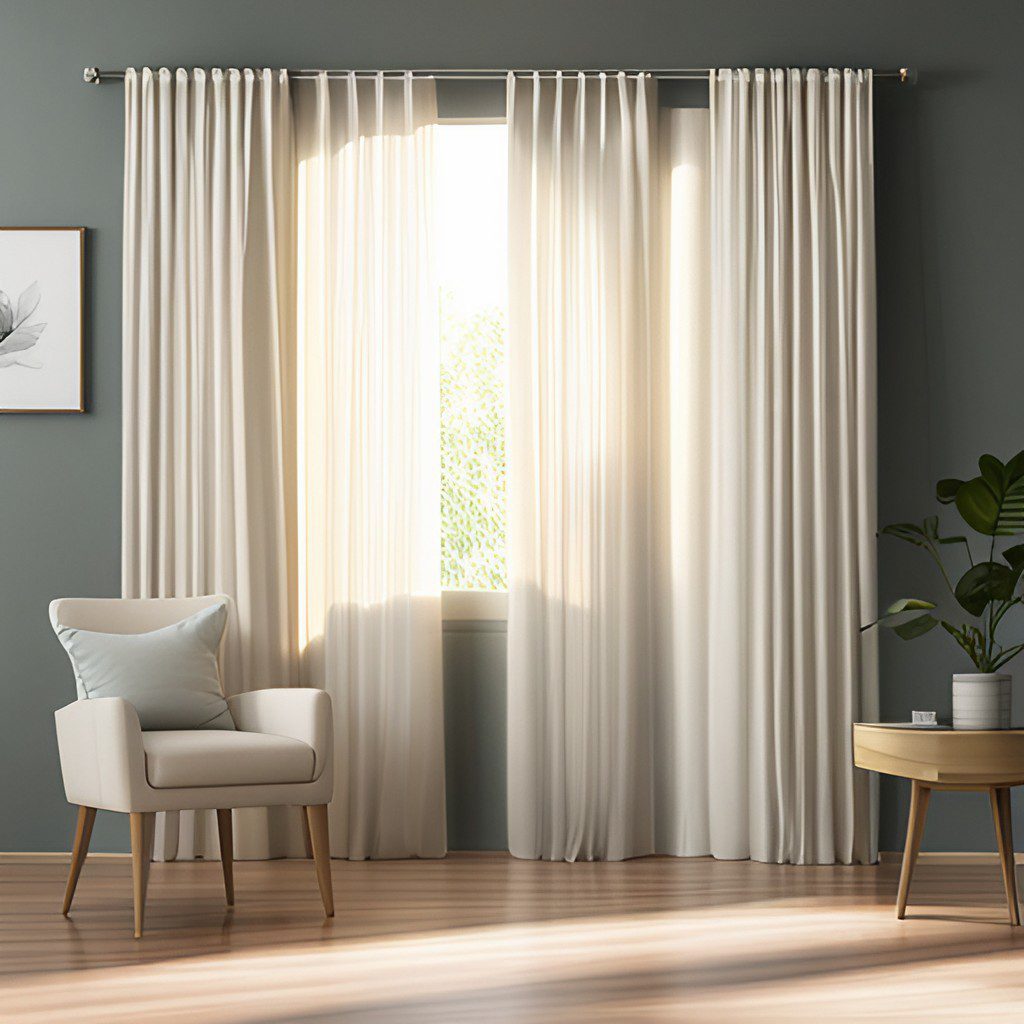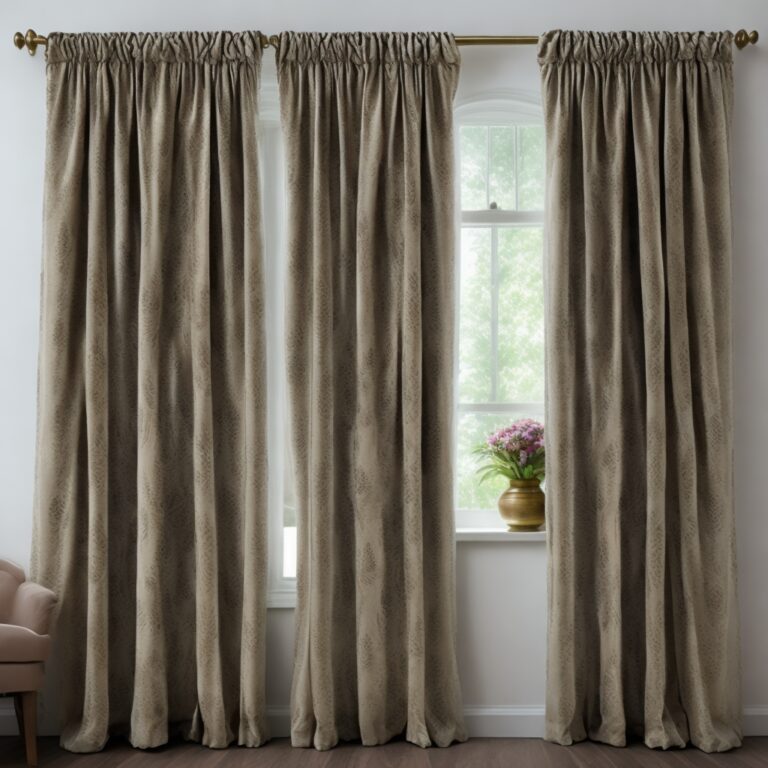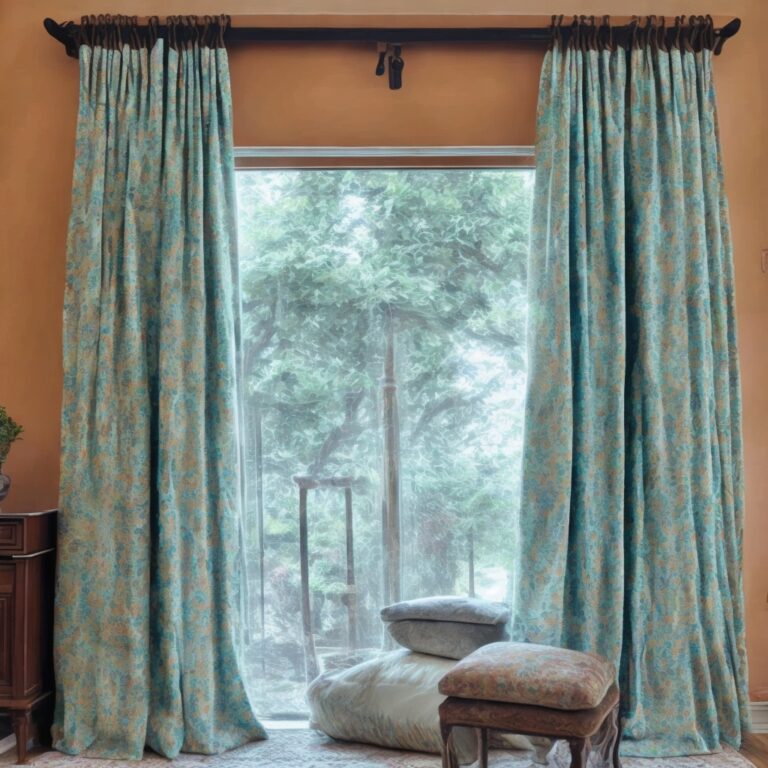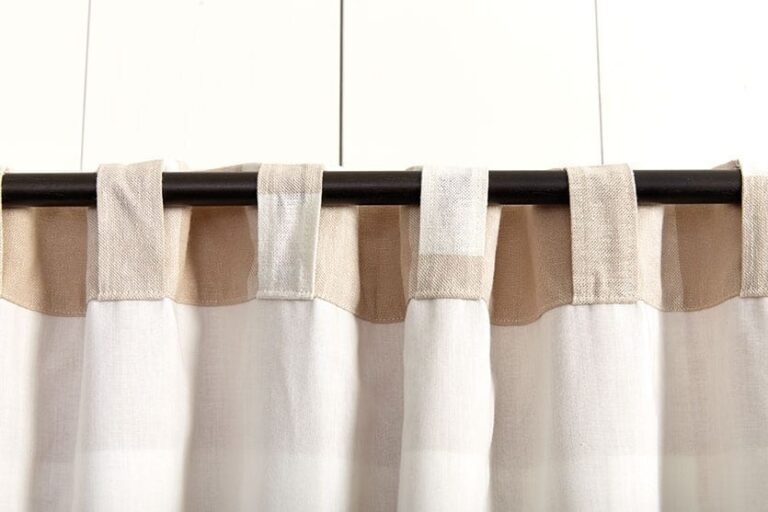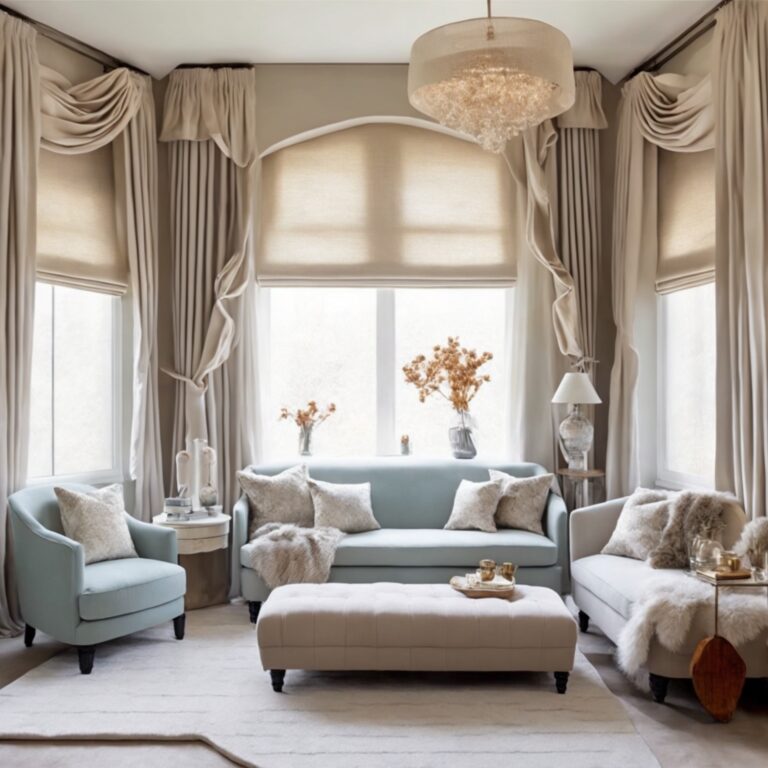How to block light from top of curtains (10 easy steps)
Light can be both a blessing and a curse when it comes to managing the environment in your home. On one hand, you want natural light to come into your house for aesthetic reasons and to save on energy costs. On the other hand, too much light coming through windows can cause discomfort and make it hard to sleep or relax in the evening.
One way of controlling how much light enters a room is by blocking light from the top of the curtains. This technique is important because it allows you to maintain a dark and comfortable atmosphere in your living space while still enjoying the benefits of natural lighting during the day. In this article, we will discuss about 10 easy methods on how to block light from top of curtains effectively in any room with minimal effort or cost.
How to block light from top of curtains
In this guide, we will walk you through 10 simple steps on how to effectively block light from the top of your curtains. We understand the importance of a darkened room for quality sleep or creating a cozy ambiance, which is why we have thoroughly tested each method we present.
Not only will we provide you with step-by-step instructions, but we will also highlight the pros and cons of each technique, allowing you to make an informed decision based on your specific needs and preferences. With our comprehensive approach, you can achieve the desired light-blocking effect and enjoy the benefits of a well-darkened space.
1. Using blackout curtains to block light from top of curtains
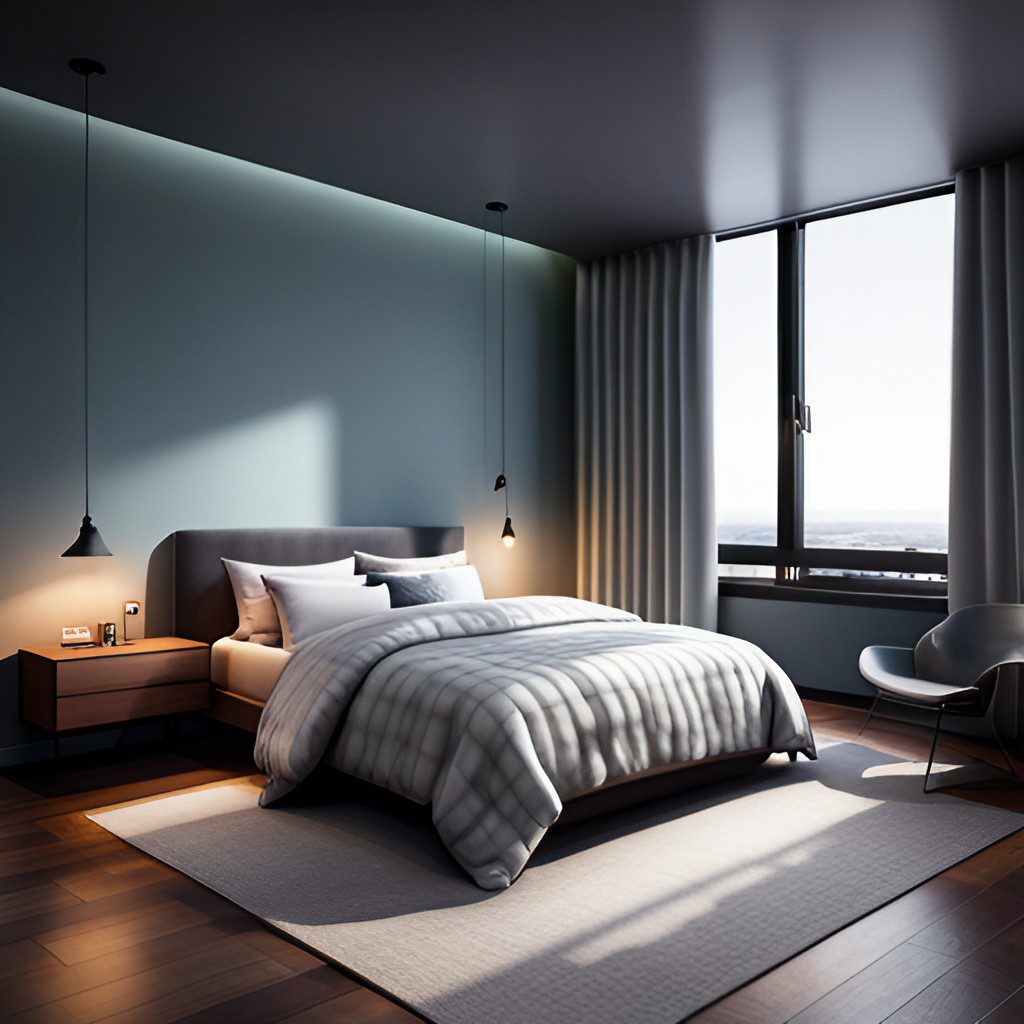
As a homeowner, I found myself struggling with the light coming into my living space. While I loved the natural light during the day, it became a nuisance to me during the evenings and particularly when trying to sleep. I knew I had to find a solution that would allow me to maintain a dark and comfortable atmosphere in my home while still enjoying the perks of natural light.
Enter blackout curtains. I had always heard of these curtains but had never thought to use them before. After consulting with an interior designer, she suggested that I purchase blackout curtains and use them to block light from the top of my existing curtains.
I followed her advice and was amazed at the results. The blackout curtains completely blocked out any excess light that was coming in from the top of my existing curtains. Not only did this allow me to create a peaceful atmosphere in my home, but it also helped me to reduce my energy costs, as my air conditioning system didn’t have to work as hard to maintain a comfortable temperature in my living space.
I also learned that blackout curtains can help protect my furniture and décor from fading due to overexposure to sunlight. By blocking out the harmful UV rays that come with the sunlight, my furniture remains vibrant and new-looking for much longer.
Pros
- Affordable and effective for darkening rooms, and enhancing comfort.
- Easy installation without extensive modifications to existing window treatments.
- Reduces energy costs, preserves furniture, and protects against UV damage.
- Enhances privacy, reduces noise, and provides insulation while maintaining style.
Cons
- Price variability based on fabric choice, potentially expensive.
- Aesthetically, some may not prefer the darker look of blackout curtains.
- Blocks natural light, limiting outdoor views and connection with nature.
2. Installing a cornice board to block light from top of curtains

If you’re looking for a more permanent solution to blocking light from the top of your curtains, then installing a cornice board may be the perfect option for you.
A cornice board is essentially an elongated box that is attached to the wall above the window and runs along the length of it. Inside this box, you can place blackout fabric or lining which will help block out any excess light coming in from the top of your curtains. The benefit of this type of installation is that it looks much nicer than using blackout curtains, as you can cover up any unsightly Wrap-Around curtain rod or brackets with beautiful fabric or drapery.
Installing a cornice board can also help reduce energy costs, as less heat will be able to come into your living space due to the blackout curtain liner inside the box.
Pros
- Cornice boards offer aesthetic appeal by concealing curtain rods and brackets with beautiful fabric or drapery.
- Provides a permanent solution compared to replaceable blackout curtains.
- Helps reduce energy costs by blocking excess light and heat.
- Creates a neat and organized look while complementing room design.
- Customizable to fit any window size or shape for the desired appearance.
Cons
- Cornice board installation is costlier than using blackout curtains, requiring extra materials and labor.
- Finding a skilled professional for this type of installation can be challenging.
- Depending on the fabric lining, some light may still enter, necessitating additional blackout curtains for optimal darkness.
3. Using a valance to block light from top of curtains
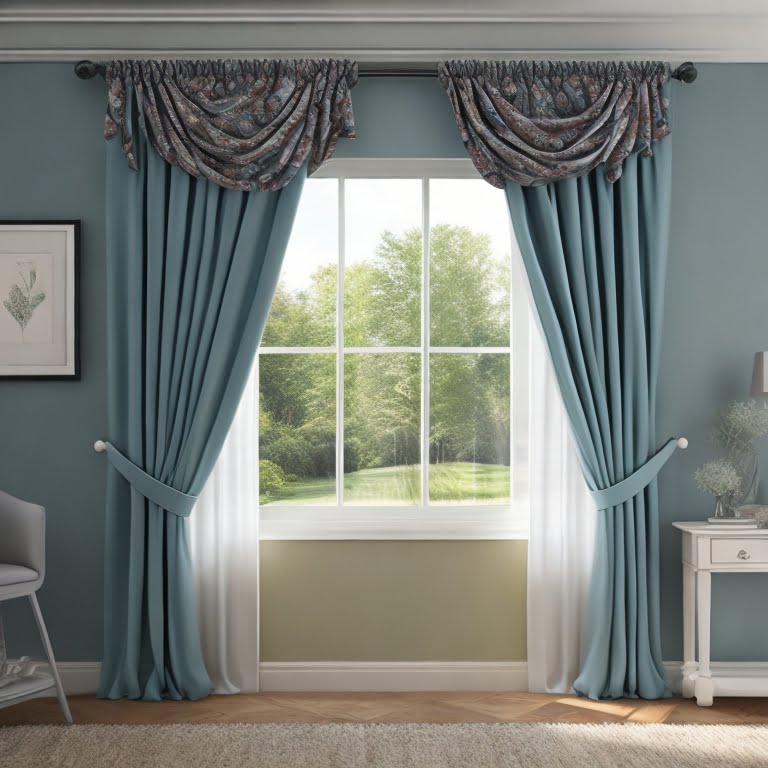
Using a valance to block light from the top of curtains is a practical solution for managing the amount of natural light that enters a room. A valance is a decorative piece of fabric that hangs across the top of the window frame and covers the curtain rod. By extending the valance beyond the curtain rod, it creates a barrier that blocks light from entering the room directly from the top.
This technique is particularly useful for bedrooms, media rooms, and other spaces where it is important to control the amount of lighting. Studies show that exposure to bright light before bed can interfere with our circadian rhythm, making it harder to fall asleep and stay asleep. A valance can help prevent such disturbances by allowing for a dark and comfortable environment.
In addition to blocking light, a valance can also add aesthetic value to a room. Its decorative function can elevate the overall design and create a more polished look. Valances come in a variety of fabrics, patterns, and styles, making it easy to find a valance that fits the design theme of the room.
Another benefit of using a valance is that it complements other light managing techniques, such as blackout curtains or shades. By combining these methods, homeowners can achieve maximum control over the amount of light that enters the room.
Pros
- Valances effectively manage natural light, making them suitable for bedrooms and media rooms.
- Promote better sleep by minimizing disruptions to your circadian rhythm.
- Enhance room aesthetics and create a polished look.
- A wide variety of fabrics, patterns, and styles are available for easy customization.
- Complement other light management techniques for maximum control over light. –
Cons
- Valances can be costly based on fabric and style choices.
- Professional assistance may be required for secure and damage-free installation.
- Improper installation may limit light management and increase energy costs.
4. Wrapping the curtains around the rod to block light from top of curtains
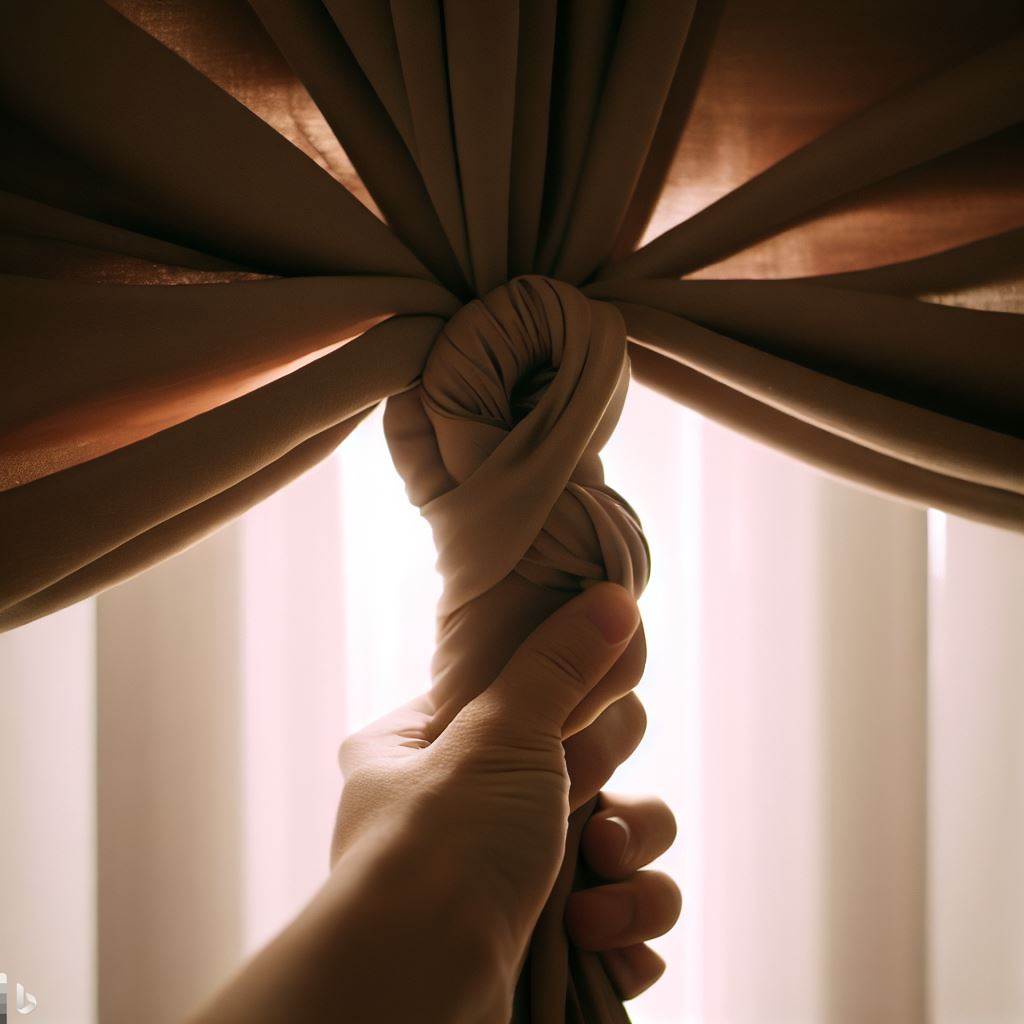
One effective way to manage the amount of light entering a room is by wrapping the curtains around the rod to block light from the top of the curtains. Based on personal experience and research, this technique offers numerous benefits for creating a comfortable atmosphere in your living space. By blocking light from the top of curtains, you can effectively control the amount of light that enters the room, which is particularly important for maintaining a dark and comfortable atmosphere for sleeping or relaxing.
This technique is especially useful for those who work night shifts or have irregular sleep schedules, as it allows for complete control over the amount of natural light entering the space. Additionally, it also provides an added layer of insulation, which can be beneficial for saving energy costs in the long run. Overall, wrapping the curtains around the rod is a simple yet effective method for managing the natural light that enters your home while still enjoying the benefits of a naturally-lit space.
Pros
- Wrapping curtains around the rod offers effective light management while maintaining aesthetics and control.
- Ideal for irregular sleep schedules, providing complete darkness for restful sleep.
- Adds insulation, reducing energy costs by blocking excess light and heat.
- A simple method for creating a comfortable atmosphere without compromising design.
- Cost-effective and DIY-friendly option for budget-conscious individuals.
Cons
- Improper installation may limit light management and increase energy costs.
- Tight wrapping can slow down curtain opening and closing, causing inconvenience.
- Not suitable for heavy fabrics, as excessive tension may cause damage over time.
5. Using magnetic tape to block light from top of curtains
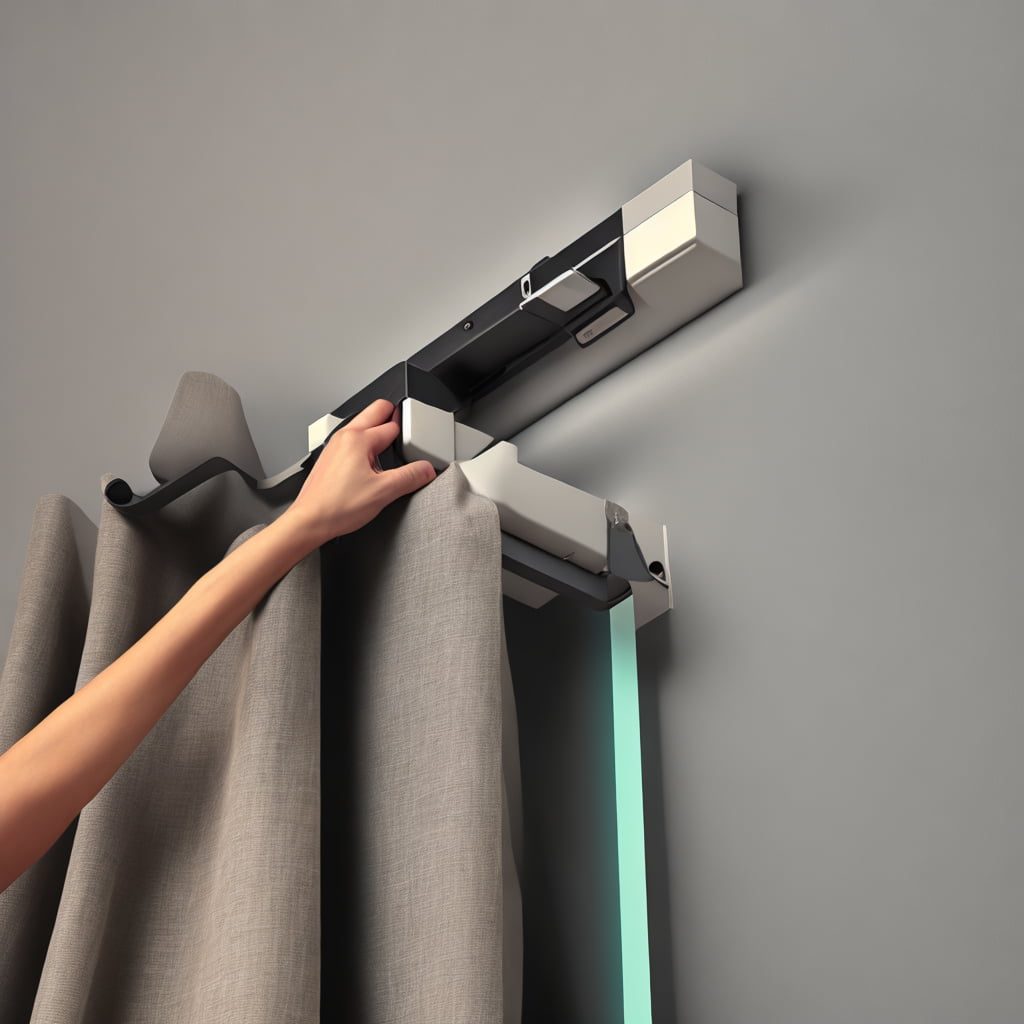
Using magnetic tape to block light from the top of curtains has been a practical solution in my home for managing the amount of sunlight entering a room. The magnetic tape is placed on the top edge of the curtain, and it holds the fabric in place against the window frame. It is an effective way of blocking light from above and preventing any light leakage that might affect the ambiance of the room. I have found that magnetic tape is versatile and can be used with different types of curtains, such as blackout curtains or sheer curtains, making it an adaptable solution for any room.
The magnetic tape is also easy to install, remove, and adjust, which makes it an ideal choice for renters or people who want an uncomplicated and non-permanent solution. Furthermore, the magnetic strip used for blocking light is made with durable materials, and it can withstand the test of time without peeling off or losing magnetic power. Overall, using magnetic tape to block light from the top of curtains is a practical and effective way of managing the light in your home, and it can provide a dark and comfortable atmosphere without compromising style and elegance.
Pros
- Magnetic tape effectively manages light, providing complete control over natural light.
- Easy installation and removal without professional assistance, suitable for renters and temporary solutions.
- Compatible with various curtain types, offering adaptability for any room.
- Durable materials ensure long-term use without frequent replacement.
- Versatile design options to match existing décor and window treatments.
Cons
- Magnetic Strip may cause wall damage when attached near windows or frames.
- Regular checks are needed for weakening power and potential warping due to heat or moisture exposure.
- Cost accumulates when covering multiple windows for optimal light management.
- Improper installation may result in light leakage around the edges.
6. Installing blinds to block light from top of curtains
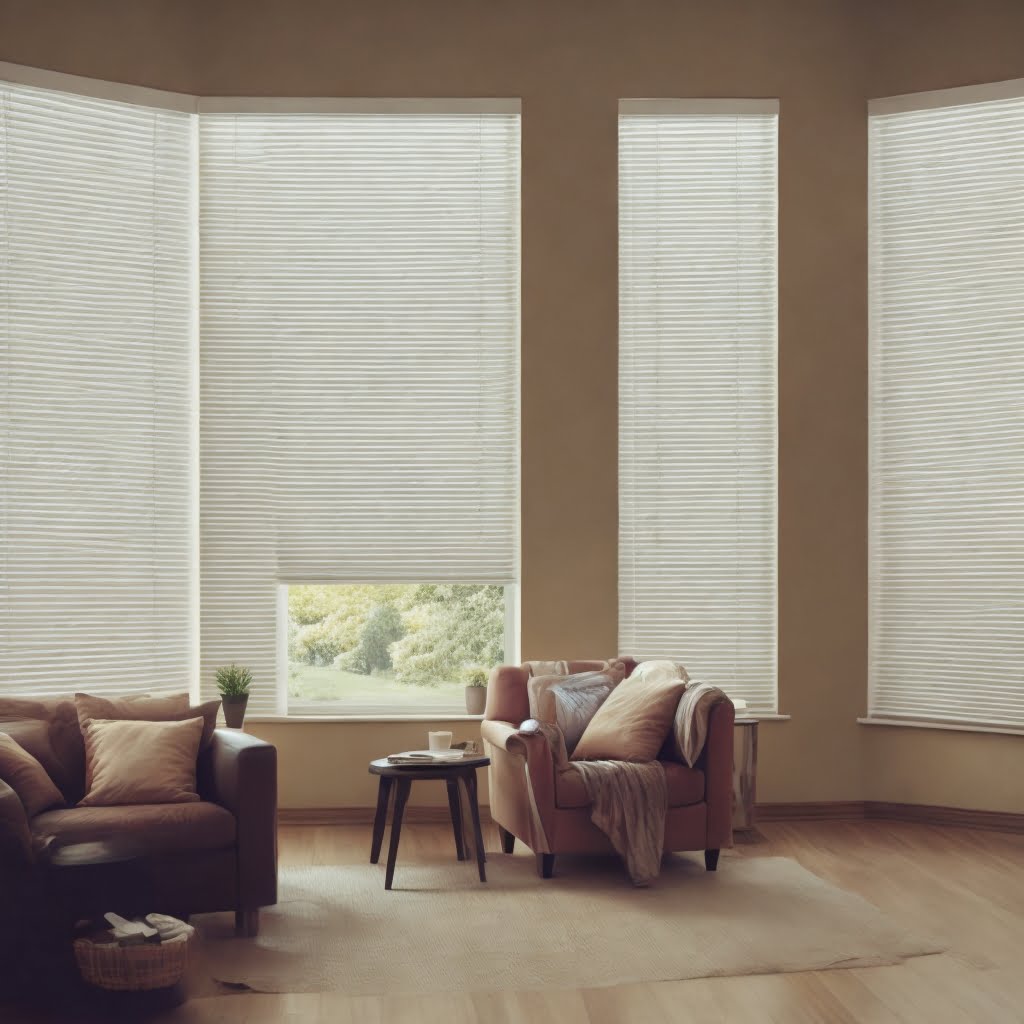
Installing blinds to block light from the top of curtains can significantly enhance the comfort and ambiance of your living space. In my experience, using blinds has helped me regulate the amount of natural light entering my room while maintaining a cozy and tranquil atmosphere. roller Blinds not only provide privacy and insulation, but also prevent unwanted glare, UV rays, and heat from penetrating the room.
Moreover, by blocking light from the top of the curtains, blinds reduce light pollution, which can have adverse effects on our circadian rhythms and overall health. Additionally, blinds come in a Variety Of Styles, colors, and materials, allowing you to customize them to match your interior decor. Installing blinds can be a simple DIY project, or you can hire a professional installer to ensure they are properly fitted and secured. Overall, installing blinds to block light from the top of curtains is an effective and affordable way to improve the functionality and comfort of your home.
Pros
- Blinds enhance comfort and ambiance, improving the living space.
- Privacy, insulation, and protection against glare, UV rays, and heat.
- Reduces light pollution, positively impacting circadian rhythms and health.
- Customizable options to match the interior decor in terms of style, color, and material.
- Installation can be a simple DIY project or done by a professional for optimal results.
Cons
- Initial investment and potential additional costs for multiple windows or professional installation.
- Improper installation may lead to insufficient light blocking and increased energy costs.
- Regular cleaning is required to maintain optimal light-blocking effectiveness.
- Certain blind materials may be susceptible to damage from heat or moisture.
- Manual operation limits adjustability for complete lighting control unless motorized systems are used.
7. Using an Extra Curtain Panel to block light from top of curtains

Using an extra curtain panel to block light from the top of curtains can effectively control the amount of sunlight that enters your room. Adding a second panel at the top of your existing curtains can create a layered effect, preventing light from penetrating through the gaps in between the two layers. This can be particularly helpful during midday or sunset when the sun is at its strongest, as these times of day typically produce the highest amount of natural light.
One of the biggest advantages of using an extra curtain panel is that it gives you more control over the amount of light that enters your room, which can help create a darker and more comfortable atmosphere for sleeping or relaxing. This technique is also useful for those who work night shifts or need to sleep during the day, as it can effectively block out unwanted light and allow for a more restful sleep environment.
Another benefit of using an extra curtain panel is that it can help reduce energy costs by keeping your room cooler in the summer and warmer in the winter. By blocking out sunlight during the hottest parts of the day, your air conditioning unit won’t have to work as hard to maintain a comfortable temperature, leading to lower energy bills over time.
Pros
- The extra curtain panel effectively controls sunlight for a darker, more comfortable atmosphere.
- Useful for night shift workers or those needing daytime sleep for better rest.
- Reduces air conditioning workload, leading to lower energy bills.
- The layered effect minimizes heat loss and blocks UV rays in colder climates.
- Provides greater control over lighting levels without automated systems.
- Inexpensive and easy DIY installation for cost savings and quality results.
Cons
- Improper installation may result in light gaps and increased energy costs.
- Regular cleaning is needed to maintain effectiveness against dust buildup.
- Cost may accumulate when covering multiple windows.
- Certain curtain materials may warp or lose insulation benefits with heat or moisture exposure.
8. Using wider and longer curtains to block light from top of curtains
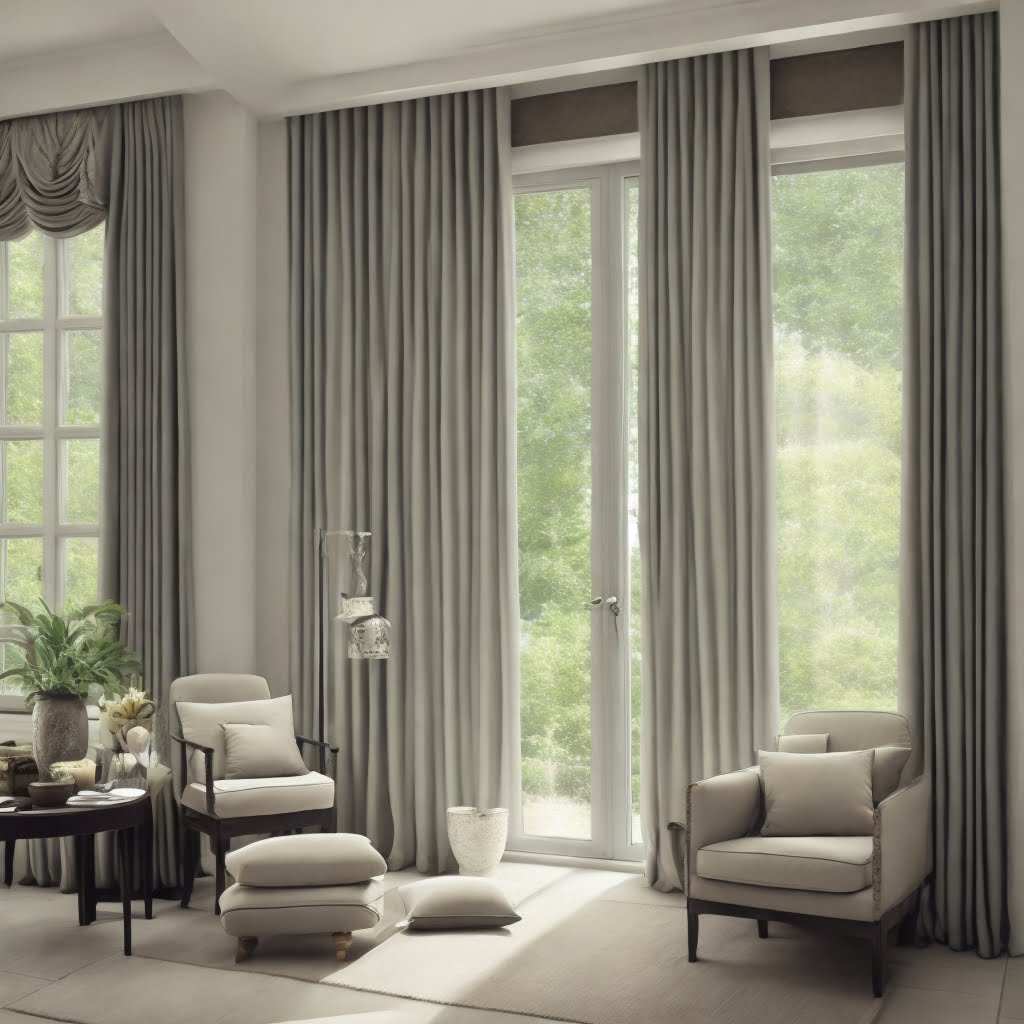
One effective solution for managing light in your home is to use wider and longer curtains to block light from the top. By extending the width and length of your curtains, you can ensure that they cover the entire window and prevent any light from seeping through at the top. This technique has several benefits, including the ability to create a darker and more comfortable sleeping environment, reduce glare on screens during the day, and save on energy costs by minimizing the need for artificial lighting. Additionally, wider and longer curtains can also add a touch of elegance and sophistication to your home decor.
When selecting curtains, be sure to choose a thick and opaque material such as blackout fabric for maximum light-blocking power. Furthermore, it is essential to ensure that curtains are properly installed and fitted to prevent any light from escaping through gaps or spaces. Overall, investing in wider and longer curtains to block light from the top can be a simple yet effective solution for enhancing the ambiance and comfort of your living space.
Pros
- Wider and longer curtains effectively block light, creating a darker and more comfortable atmosphere.
- Reduced glare on screens, minimizing eye strain for a prolonged computer or phone use.
- Adds elegance, sophistication, and privacy to living spaces.
- Wide range of colors, styles, and materials for easy matching with existing decor.
- Simple and cost-effective compared to other methods like blinds or tinting window film.
- Quick installation for immediate benefits.
Cons
- Improper hanging may result in light gaps and increased energy costs.
- Certain fabrics require regular cleaning to maintain light-blocking effectiveness.
- Cost accumulates with multiple panels for adequate coverage.
- Heat or moisture exposure can damage fabrics and reduce insulation benefits.
9. Using Push Pins and Clips to block light from top of curtains
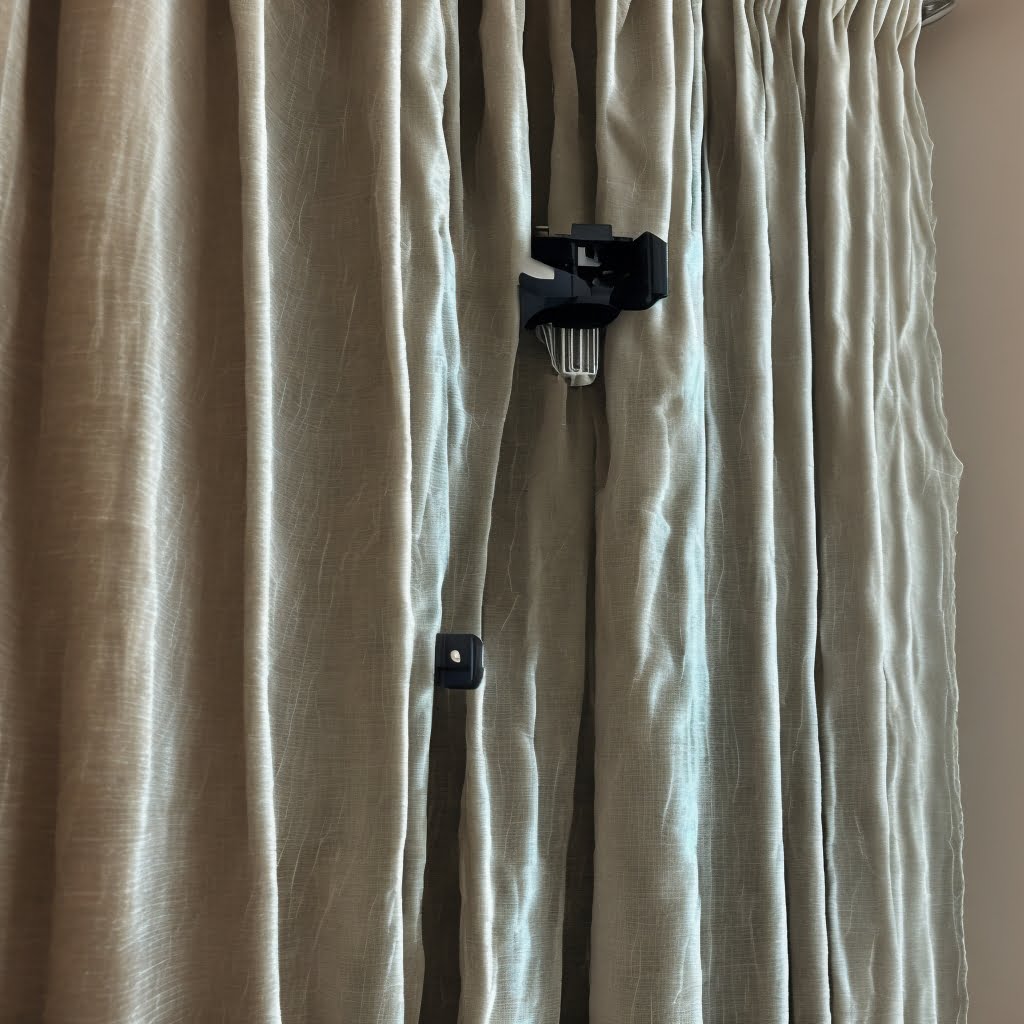
The use of push pins and clips to block light from the top of curtains is a practical and efficient technique that can help you control the amount of natural light that enters your room. By inserting push pins or clips along the top of your curtains, you can create a gap between the fabric and the wall, preventing light from penetrating into the room. This approach is particularly effective at night when you want to keep your room dark to ensure a restful sleep.
Push pins and clips are easy to use and do not require any special skills or equipment. Simply place the pins at regular intervals along the top edge of your curtains, ensuring that the gap created is adequate to block out the light. The clips can also be used in a similar way, attaching to the curtain fabric and creating a space between the curtain and the wall.
Pros
- Using push pins and clips provides a practical and efficient method to control natural light without additional equipment or skills.
- Easy to use by inserting pins or clips along the top edge of curtains, creating a light-blocking barrier.
- Effective for creating a dark environment for undisturbed sleep, especially at night.
- Cost-effective compared to other methods like blackout shades or tinting film.
- Easy installation and removal for flexibility in adjusting light levels.
- Low maintenance as they don’t accumulate dust like some window treatments.
Cons
- Difficulty in completely blocking all external light sources if not positioned correctly.
- Excessive use of pins may create gaps that affect temperature regulation.
- Aesthetic drawbacks are possible with visible pin holes on certain curtain fabrics.
- May require frequent replacement due to its small size and potential for loss or misplacement.
10. Using Velcro to block light from top of curtains

One effective technique for controlling the amount of light entering a room is to block it from the top of curtains using Velcro strips. I have personally used this method and found it to be a simple and efficient way to manage light levels in my home. Velcro strips can easily be attached to the top of curtains and then fastened to the wall or window frame, providing a secure hold that ensures the curtains remain closed at the top.
This allows for greater control over the amount of light entering the room and can create a more comfortable and relaxing atmosphere in the evenings. Additionally, Velcro strips are easily removable, making them a convenient option for those who want to switch up their curtains or move them to a different room. Overall, using Velcro to block light from the top of curtains is a practical and effective solution for managing natural light in your home.
Pros
- Secure attachment for effective light blocking.
- Flexible and adjustable for easy light control.
- Convenient installation and removal.
- Versatile, works with various fabric and curtain styles.
- Cost-effective compared to other light-blocking options.
Cons
- Improper installation may allow some light leakage.
- Adhesive may weaken over time, requiring maintenance or replacement.
- Heat or moisture exposure can affect adhesive effectiveness.
- Velcro may leave marks or damage on fabric or walls.
- Some light leakage may occur around the edges of curtains.
Tips for blocking light from top of curtains
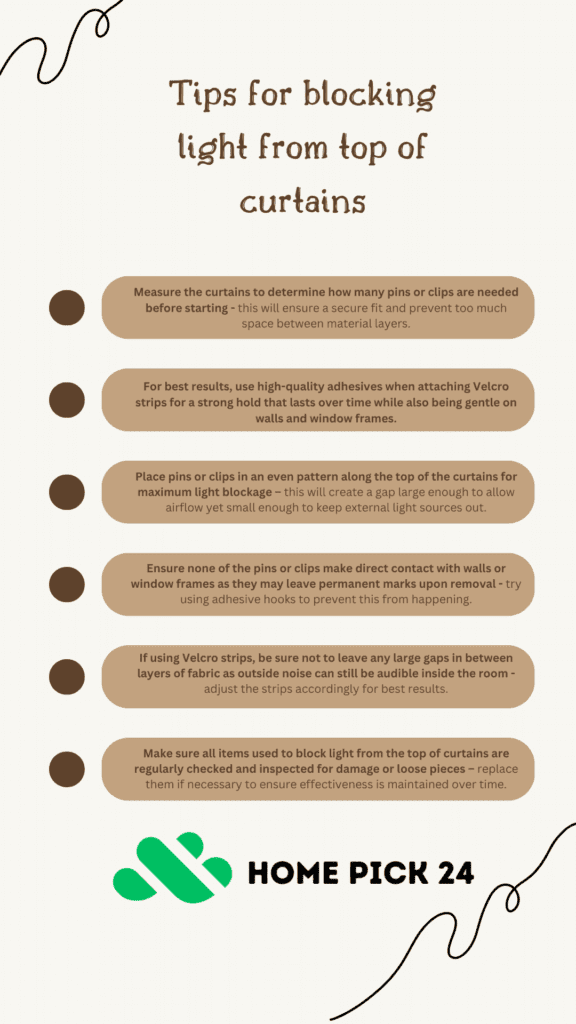
1. Measure the curtains to determine how many pins or clips are needed before starting – this will ensure a secure fit and prevent too much space between material layers.
2. For best results, use high-quality adhesives when attaching Velcro strips for a strong hold that lasts over time while also being gentle on walls and window frames.
3. Place pins or clips in an even pattern along the top of the curtains for maximum light blockage – this will create a gap large enough to allow airflow yet small enough to keep external light sources out.
4. Ensure none of the pins or clips make direct contact with walls or window frames as they may leave permanent marks upon removal – try using adhesive hooks to prevent this from happening.
5. If using Velcro strips, be sure not to leave any large gaps in between layers of fabric as outside noise can still be audible inside the room – adjust the strips accordingly for best results.
6. Make sure all items used to block light from the top of curtains are regularly checked and inspected for damage or loose pieces – replace them if necessary to ensure effectiveness is maintained over time.
frequently asked questions
Why is it important to block light from the top of curtains?
Blocking light from the top of curtains helps create a darker and more comfortable environment, especially during sleep or when watching movies. It prevents light leaks that can disrupt sleep patterns or cause glare on screens.
What causes light to leak from the top of curtains?
Light leakage can occur due to various reasons, such as gaps between the curtain and the wall, improper curtain length, or the use of sheer or thin fabrics that allow light to pass through.
Can I use any type of curtains to block light from the top?
While any curtain can provide some level of light blockage, it’s best to choose curtains specifically designed for blackout purposes. Look for curtains made of thick, tightly woven fabrics or those labeled as “blackout” curtains for optimal light-blocking capabilities.
How do I maintain the effectiveness of light-blocking curtains?
Regularly inspect the curtains for any wear or tear. Clean them according to the manufacturer’s instructions to ensure they maintain their light-blocking properties. Replace curtains or update light-blocking methods as needed.
Will blocking light from the top of curtains also block out noise?
While blocking light from the top of curtains may help reduce noise to some extent, its primary function is to prevent light penetration. For effective noise reduction, consider using curtains made of thicker or sound-absorbing materials or explore other soundproofing methods.
Can I install light-blocking solutions myself, or should I hire a professional?
Many light-blocking solutions can be installed as do-it-yourself projects. However, if you’re uncertain or if the installation requires complex adjustments, it’s recommended to consult a professional to ensure proper implementation.
Conclusion
Blocking light from the top of curtains is a great way to reduce energy costs and create a more comfortable atmosphere in your home. With the help of Velcro strips, pins or clips, you can easily install these solutions yourself with minimal effort and cost. However, it’s important to ensure proper installation techniques are followed for best results. Regular maintenance should also be done to check for any wear or tear that may affect its effectiveness over time. If you have any doubts about how to block light from the top of your curtains correctly, don’t hesitate to consult a professional who can provide expert advice on this matter.

I am Stacy Roberts, an experienced curtains expert. I spend most of my time writing about curtain design for various magazines and websites, including writing many blog posts on the topic for Homepicks24.com. I love helping people find the perfect curtains for their homes and take great pride in my work. When I'm not writing or helping people choose curtains, I enjoy spending time with my wife and two young children. I also love playing tennis and going to the beach. I believe that having a beautiful home with well-chosen curtains is essential to creating a special atmosphere of comfort and serenity, and thus I strive to help people find the right window treatment for their homes.

